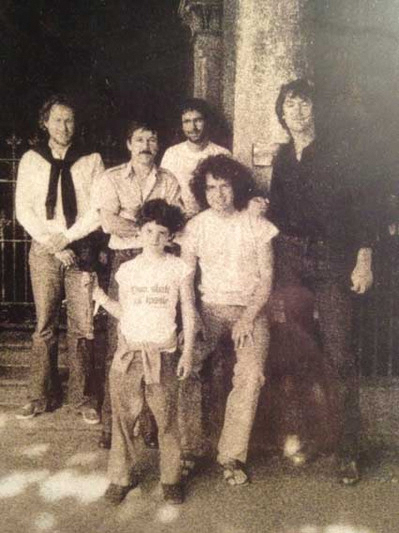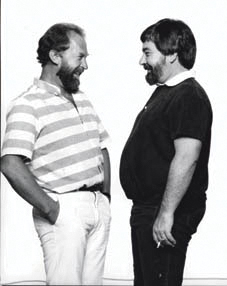GAWEN RUDDER: The rise and fall and rise of the independents

Warning: This article may contain reference to deceased, disremembered or defunct advertising agencies says Gawen Rudder, principal of The Knowledge Consultancy
Blame the box. Pre-TV there were but two foreign-owned agencies in the land, J. Walter Thompson and Lintas*.
By the time colour television lit up our lives, a dozen of America’s largest agencies and a handful of British colonialists landed on our distant shores. McCann arrived in 1959, and joined an unseemly feeding frenzy, that comprised Needham, Bates, Foote Cone & Belding, Ogilvy & Mather, Grey, Masius, Young & Rubicam, DDB, BBDO and Benton & Bowles, leaving the founders of many of our Australian-owned independents a little wealthier.
Larger once-were-independents included Hansen-Rubensohn founded in 1929, George Patterson in 1935, Jackson Wain and United Services Publicity just after WW11, and Clemenger in 1946.
Other indy names around this time included the old 1906 Weston Company, Berry Currie, Briggs Canny James & Paramor, Murray Evans, Nichols-Cumming and Rodgers Holland Everingham. Some lasted longer than others.
Frank Goldberg followed the well-trodden path from the advertising department of a department store to adland. He opened his agency in 1916, travelled extensively and picked up major international accounts. Ten years after his death, Goldberg Advertising was bought by Masius Wynne-Williams. A familiar story, replicated time and time again as an independent succumbed to a multinational.

Fortune went on to become our first international independent with a beachhead in S.E. Asia. Ken Landell-Jones’ kingdom however went through a number of iterations to eventually disappear into Publicis. USP became USP Benson in 1960 and transmogrified into the DDB Worldwide.
By 1969, the fabled and feared Frank Grace (described by Australian Business as ‘Australia’s toughest boss’) still retained a firm grip on the reins of the largest of the remaining independents, Jackson Wain, even opening an office in London before accepting the inevitable Leo Burnett buyout some years later. Down in Melbourne Clemenger were emerging as a force.
Berry Currie, Mullins Clarke and Ralph, Monahan Dayman Adams and Hertz Walpole flew the Australian flag. In ’72 a band of cockeyed optimists and protectionists headed by ‘Black Jack’ Cumming formed AUSTAC, which unsuccessfully lobbied the government on behalf of locally-owned agencies. Cumming, like Canute, got his feet wet and lost.
The changing landscape of the eighties paved the way for yet another generation of brave new world independents like John Bevins, Box Emery, Foster Nunn Loveder, Harris Robinson Courtenay, Leonardi & Curtis (the Melbourne agency that gave Sean Cummins and Russel Howcroft a leg up), Magnus Nankervis & Curl, McCarthy Watson & Spencer, Pope Kiernan & Black, Samuelson Talbot and Schofield Sherbon Baker. Every taxi driver in town knew the way to Singo’s joint and Mojo. These indies were formed by disgruntled emigres from the ranks of multinationals. Others, like The Campaign Palace (pictured top) and Gough Waterhouse, drew from the pool of English art directors, copywriters, and later, strategists.
Intertwined between all these comings and goings a number of hybrids – some fanciful empire builders and others enduring – were long forgotten Jaques McAskell and GFPA-CJ Group. A few fails like Michael Ball’s Totam, his pipe dream of an independent holding company; Greg Daniel went down the same track with Issues & Images and Blue Freeway which floated in 2006 and faltered at the Stock Exchange. Photon, re-badged Enero, lives on, largely thanks to the persistence of Matthew Melhuish.
The listed tech groups followed a similar model with AJF Partnership, Khemistry and others under its catchy Trimantium GrowthOps moniker. The Works was bought by RXP to extend their digital reach and the industry was all aflutter with the emergence of management consultancies like the ‘big four’ (PwC, E&Y, Deloitte and KPMG) which have been eying off advertising for a while. Howcroft insists that consultancies should be seen as companionable bedfellows with agencies, “(we) also help clients rebuild trust in advertising and marketing.” Accenture is well and truly rusted on to The Monkeys, and good luck to the three of them. So, it was all optimism and Dom Perignon all ‘round for the founders. But as the bubbles subsided, many discovered these new-gen entrepreneurs demand the even more stringent ROI than the traditional transnationals.
The ASX can be a cruel master as MDA discovered when it succumbed to what proved to be a reverse takeover by Mojo (Mo and Jo pictured above). John Singleton wasn’t too far from the truth with his biting, “marriage of the Beatles to the Post Office” quip. Singo has form as both an independent and international operator.
So, what’s behind this local/global brouhaha? The thinking behind the first wave was obvious. JWT followed their client General Motors to Melbourne in 1927 and Lintas followed with their captive clients. Come 1956 and the launch of television however, the game of ‘follow the leader’ was on. The Americans convinced us, and their clients, that they had the technical expertise to take Australia into this brave new world.
But for now, enough ancient history. It is the nature of our business that we breed independent thinkers, optimistic creative people who follow their dream to create a new agency, unlike any other. And so it should be. This therefore is a developing story. Rather than sifting through the ashes of yesteryear, the next article in CB will take a look at the rise of a new breed of independent ad agency – always assuming the two words ‘advertising agency’ remain a relevant descriptor in Tomorrowland.
*Younger readers might wonder who J. Walter Thompson was, or that matter, Lintas. Both agencies date back some 150 years. Commodore of the New York Yacht Club, James Thompson, was a book keeper, like the man who bought the agency some years ago. There was no one called ‘Mr. Lintas’, the name stood for Lever International Advertising Services, and launched as a house agency for Unilever. The once-great JWT was buried at sea late last year and the famed Lintas name exists only as a shell of its former self after departing our shores.

5 Comments
Excellent article.
Great read!
Can anyone tell me who founded Berry Currie please and in what year?
My Father was Bill Rodgers of Rodgers Holland Everingham. Dad sold out to London Press in 1968 made his fortune by age 42. Schweppes was one of his four major accounts, including Cadberry, Penfolds and Polaroid.
After the sale he took up the role of Marketing Director at Schweppes however shortly thereafter found his niche in menswear setting up Briacci & Brookes Menswear in Double Bay and Woollahra. This business thrived for 25 years until Dads retirement in 2000. Dad left Sydney and enjoyed many happy years at Sanctuary Cove in Qld golfing and enjoying regular international travel, with Maui being his must stay when returning from visiting Arthur Holland in New York. Milan was his other favourite distinaion.
I am looking for some original scraperboard artwork done for Briggs, Canny, James & Paramor and their client, Penfolds around the mid 60’s. Penfolds themselves have kept nothing from that time. Anybody know where they are now? Cheers, Mike McCormack